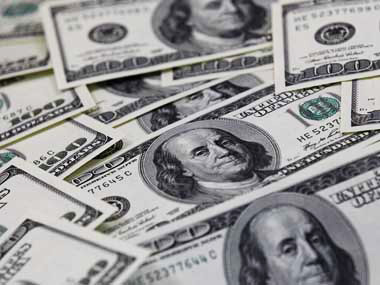Azerbaijan, Baku, Sept 17 /Trend/
Ellada Khankishiyeva, Trend Analytical Centre Head
Trading in New York finished with a new record fall of the exchange rate of the U.S. dollar compared to the euro yesterday. Today the dollar today updated its lowest level in four months compared to the euro ($1.3022/ 1 euro), after the launch of the third round of quantitative easing by the Federal Reserve System. In turn, the euro has demonstrated growth after the announcement of the decision of the German Constitutional Court on Wednesday which approved the country's participation in the European Financial Stability Facility and the release of positive statistics on industrial production in the euro area.
An increase of the exchange rate of the euro compared to the dollar does not promise great benefits from a purely economic point of view for many countries in the world actively using the dollar. The dollar is still the most liquid global currency for many countries despite the fact that the dollarization of the economy has reduced in recent years. It is known that 80 per cent of the world's trade turnover falls on to the dollar. In addition, it is the world's reserve currency with almost all the central banks holding the lion's share of their reserves in dollars. Last year, 62.1 per cent of the world reserves were stored in U.S. dollars and 25 per cent - in euros.
There is enough 'deep' domestic currency market with many countries in this currency whereby wages are issued and personal savings are stored in dollars The cost of real estate, cars and other major purchases in many countries is still estimated in the U.S. currency although the actual calculation is still in national currencies.
Therefore, all currencies check their strength or weakness compared to the dollar. In addition many analysts today equate the price of oil to an equivalent to the dollar value. Indeed, virtually all of the world's oil is sold in dollars. Their theory is borne out in practice that when the price of oil increases, the dollar usually starts cheaper. Devaluation of the dollar has an impact on other markets. Thus, the demands for metals including precious and agricultural commodities which are traded in dollars are increasing due to the cheapening of the dollar. It is known that gold hit a peak price (1740 USD. /Oz) on Wednesday from the end of February 2012.
The outflow of investors from the dollar was caused by the creation of two opposite dynamics in the movement of the U.S. currency and the EU euro zone. International rating agency Moody's representatives said that the U.S rating may be reduced next year if politicians do not come to a consensus and do not start a real reduction in the budget deficit and state debt. It should be stressed that the U.S. state debt is approaching its legislative threshold. On the other hand, the European Central Bank will continue holding a very soft monetary policy. As a result operators working with cash in the market of bank deposits, convert their dollar assets into euros. The increasing demand for the euro creates a lack and therefore rate appreciation.
There are no fundamental reasons in the euro zone that would support the European currency. The economic growth remains sluggish. Analysts reduced the forecast of economic development in the region. This is greatly stipulated by budget consolidation and a decrease in budget expenditure. The European Central Bank has revised the euro zone GDP annual growth forecast as being a downtrend and the regulator expects a rate reduction by 0.2-0.6 per cent.
The U.S. does not hide its interest in a controlled weakening of the dollar. For the past few years the U.S. rushes about between the ever-increasing federal budget deficit and the foreign trade deficit and the need to maintain the interest of foreign investors in the U.S. economy. According to the U.S. Department of Commerce, in June 2012, the industrial production volume in the U.S. increased on a monthly basis by 0.1 per cent. Exports of goods and services from the U.S. in the second quarter increased by six per cent. The U.S. GDP in the second quarter of 2012 increased by 1.7 per cent compared to the previous quarter, while the EU's GDP fell by 0.2 per cent.
It is also important that the process of the world countries' refusal from the dollar which began in mid-2008 is lengthy. This testifies to the fact that the U.S. dollar will still be dominant in the reserves of each country. It is hard to find an alternative.






